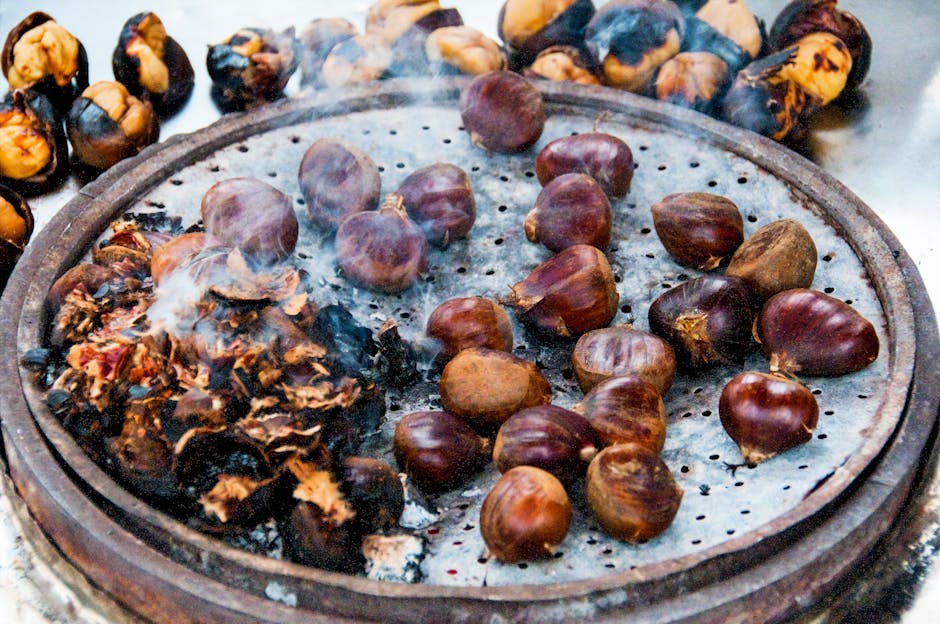Harvest of Fire: Unveiling the Secrets of Autumn’s Fiery Transformation
Harvest of Fire: Unveiling the Secrets of Autumn’s Fiery Transformation
The Spectacle of Autumn’s Blaze
Autumn. The word itself conjures images of crisp air, the scent of woodsmoke, and a breathtaking spectacle of color. The vibrant hues of red, orange, and gold, painting the landscape in a fiery masterpiece, are a hallmark of this season. This phenomenon, often referred to as the ‘Harvest of Fire,’ is a complex process deeply rooted in the intricate biology of trees and the changing environmental conditions.

Beyond its aesthetic beauty, the Harvest of Fire holds significant ecological implications, influencing wildlife behavior, nutrient cycling, and the overall health of forest ecosystems. Understanding this seasonal transformation requires delving into the fascinating science behind the changing leaf colors, the preparation for winter dormancy, and the ultimate impact on the surrounding environment.

The Science Behind the Colors: Chlorophyll’s Decline and Carotenoid’s Ascent
The vibrant colors of autumn leaves are not a sudden emergence, but rather a revelation of pigments already present within the leaf. Throughout the growing season, chlorophyll, the green pigment responsible for photosynthesis, dominates the leaf’s color. However, as daylight hours shorten and temperatures drop, the production of chlorophyll begins to slow down.
This decline in chlorophyll production unveils the previously masked pigments – carotenoids and anthocyanins. Carotenoids, responsible for the yellows and oranges, are present in leaves throughout the growing season, but their presence is masked by the abundance of chlorophyll. As chlorophyll breaks down, these yellows and oranges become visible, contributing to the autumnal palette.
Anthocyanins, the pigments responsible for the reds and purples, are produced in the autumn. Their synthesis is triggered by a combination of factors including sugar accumulation in the leaves, cool temperatures, and sunlight. The interplay of these factors creates the stunning variety of colors we observe during the Harvest of Fire.
Factors Influencing Color Intensity
- Temperature: Cool nights and warm, sunny days are ideal for anthocyanin production, resulting in brighter red hues.
- Sunlight: Sufficient sunlight is crucial for anthocyanin synthesis, ensuring vibrant color displays.
- Moisture: Adequate soil moisture supports healthy leaf development, contributing to the intensity of color.
- Tree Species: Different tree species exhibit varying color characteristics, contributing to the diversity of the autumn landscape.
The Ecological Significance: Beyond Aesthetics
The Harvest of Fire is not merely a visual spectacle; it has profound ecological consequences. The decaying leaves contribute significantly to the nutrient cycle of forest ecosystems.
As leaves decompose, they release essential nutrients back into the soil, enriching the ground and supporting the growth of future vegetation. This natural process is crucial for the overall health and biodiversity of the forest.
Impact on Wildlife
The changing colors and leaf fall have a significant impact on wildlife. The abundance of leaves provides food for various insects and animals, while the changing colors can serve as cues for migration and hibernation patterns. Animals such as squirrels and other rodents rely on the abundant acorns and nuts produced during autumn, preparing for the lean winter months.
Nutrient Cycling and Soil Health
The decomposition of fallen leaves enriches the soil with organic matter, improving its structure, water retention, and nutrient content. This nutrient cycling is fundamental for the growth of new plants and the overall health of the ecosystem. The release of nutrients from decaying leaves provides essential nourishment for the trees themselves, preparing them for the upcoming growing season.
Human Impact and Conservation
Human activities can have a significant impact on the intensity and duration of the Harvest of Fire. Pollution, deforestation, and climate change can all affect the health of trees and their ability to produce vibrant autumn colors.
Protecting forest ecosystems is vital to preserving the beauty and ecological significance of this natural phenomenon. Conservation efforts focused on sustainable forestry practices, air and water quality, and climate change mitigation can help ensure that future generations can continue to enjoy the spectacle of the Harvest of Fire.
Exploring the Harvest of Fire Around the World
The autumnal display is a global phenomenon, with regional variations in timing, intensity, and color palettes. In North America, the vibrant reds, oranges, and yellows are iconic. However, different regions around the world offer unique and equally stunning displays of autumnal color.
From the fiery foliage of Japan’s maple trees to the golden hues of European beech forests, the Harvest of Fire manifests in diverse and breathtaking ways. Exploring these regional variations offers a deeper appreciation for the complexity and global reach of this seasonal transformation.
Regional Variations in Autumn Colors
- North America: Known for its intense reds, oranges, and yellows, driven by the abundance of maple, oak, and birch trees.
- Europe: Features a range of colors including golden yellows and browns, with beech and oak trees dominating the landscape.
- Asia: Japan is particularly famous for its spectacular displays of crimson and gold, showcased by its maple trees.
- South America: While less dramatic than in temperate regions, Southern Hemisphere autumns offer their own unique displays.
The Cultural Significance of Autumn
Beyond its scientific and ecological importance, the Harvest of Fire holds significant cultural value. Throughout history, autumn has been associated with themes of harvest, reflection, and preparation for winter. Numerous festivals and celebrations are centered around this season, celebrating the bounty of the earth and the changing cycle of life.
The rich tapestry of cultural traditions surrounding autumn demonstrates the deep connection between human societies and the natural world. From harvest festivals to artistic representations of autumnal landscapes, the Harvest of Fire has profoundly influenced human culture and creativity.

Conclusion: Appreciating Nature’s Masterpiece
The Harvest of Fire, a breathtaking display of autumnal color, is far more than a mere seasonal event. It is a complex ecological process with profound implications for wildlife, nutrient cycling, and the overall health of forest ecosystems. Understanding the science behind the changing leaf colors, appreciating the ecological significance, and recognizing the cultural values associated with this season enriches our connection with the natural world.
As we witness the fiery transformation of the landscape, let us cherish this spectacle, work towards its preservation, and continue to explore the mysteries and wonders of the Harvest of Fire.





